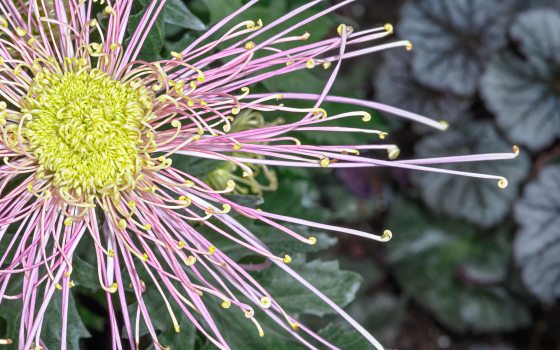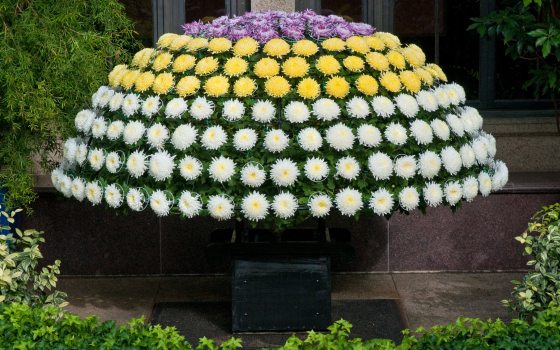Cherished for their exquisite beauty, rich hues, and delightfully distinct variations, chrysanthemums are in a class—or rather 13 classes—all their own. Complex by nature, chrysanthemums are divided into 13 classifications, each representing a distinct flower form. Even a chrysanthemum flower itself is intricate and multifaceted, as each is composed of hundreds of florets, or small flowers. All complexities aside, the simple truth is this: as part of Blooms & Bamboo: Chrysanthemum and Ikebana Sogetsu Artistry, gorgeous representations of each of the 13 chrysanthemum classifications are on display now in our Conservatory … and here’s where you can find them.
Class 1: Irregular Incurve
Representing the largest blooms within the chrysanthemum genus, irregular incurve classification applies to those with florets or petals that loosely incurve and close the center. Lower florets present an irregular, or informal, appearance and may give the chrysanthemum a skirted effect. Our radiant Chyrsanthemum × morifolium ‘Seiko’ that make up our pagoda shapes in the East Conservatory represent the irregular incurve classification.

Class 2: Reflex
Shaped like a flattened globe, chrysanthemums with the reflex classification have florets or petals that curve downward and overlap, similar to bird plumage. The exceptionally vibrant Chrysanthemum × morifolium ‘Domingo’ is a beautiful representation of the reflex classification and can be found in our Main Conservatory on the western side of the Exhibition Hall.
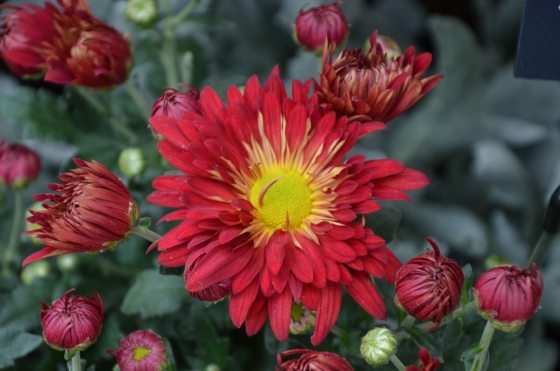
Class 3: Regular Incurve
Regular incurve chrysanthemums feature a true spherical bloom equal in breadth and depth. These well-balanced beauties have petals that smoothly incurve and form a ball shape, curving tightly up. Chrysanthemum × morifolium ‘Gillette’ on the eastern side of our Exhibition Hall serve as a beautiful example of this classification.
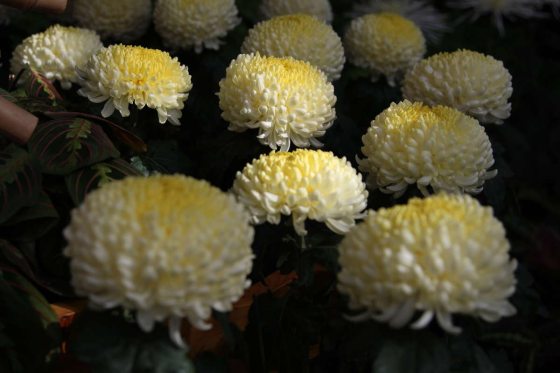
Class 4: Decorative
Chrysanthemum × morifolium ‘Indian Summer’ is not only a bronze showstopper along the southeastern walkway in our Main Conservatory but also an example of decorative chrysanthemum classification, thanks to its flattened bloom with short florets or petals. The upper florets incurve, while the lower petals curve outwardly, though not as much so as those within the reflex classification.
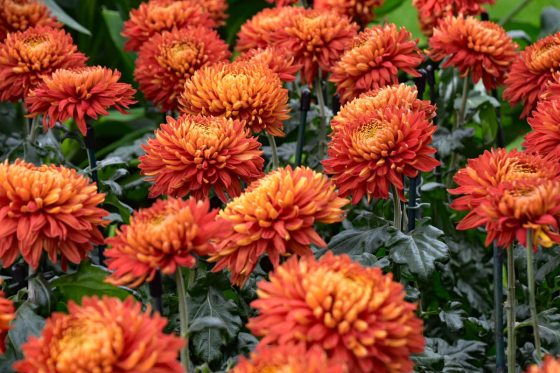
Class 5: Intermediate Incurve
Similar to the irregular incurve, the intermediate incurve classification is smaller than its counterpart, with shorter florets that only partially incurve with full centers. It also features an open appearance, as its petals are arranged more loosely. One such chrysanthemum is Chrysanthemum × morifolium ‘Le Mans’, a stunning pink flower that can found in our East Conservatory.
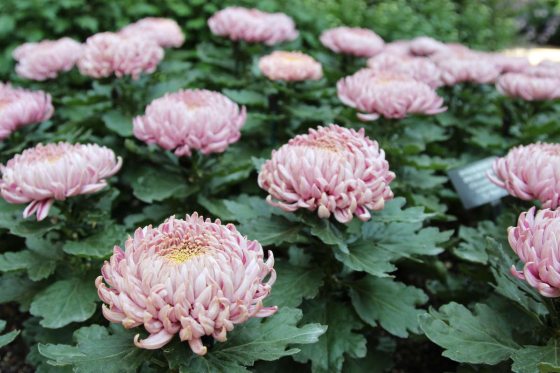
Class 6: Pompon
Pompon is a particularly fun classification, characterized by small, spherical blooms that are somewhat flat when young but fully round when mature. As the name suggests, petals curve either upwards or downwards in a round, globular shape. These whimsical blooms are popular in cut-flower displays, and size ranges from small button types to large disbudded blooms measuring almost four inches in diameter.

Class 7: Single & Semi-Double
You may be fooled by single & semi-double chrysanthemums; this classification produces blooms reminiscent of a daisy, with petals extending outward around a circular center. You’ll find several of these chrysanthemums in our Main Conservatory, including the luminous Chrysanthemum × morifolium ‘Icey Isle’.
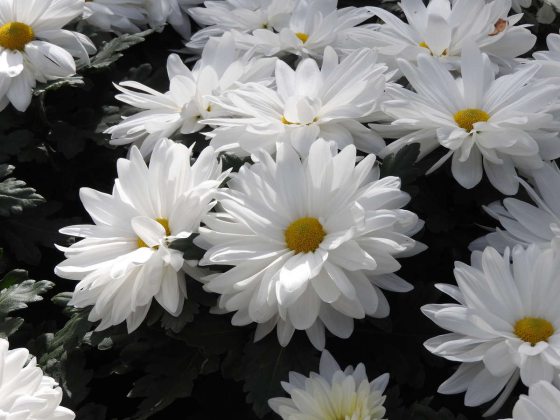
Class 8: Anemone
If you’d like to see a variety of anemone chrysanthemums, then you’re in luck. These chrysanthemums are showcased in the form of columns, baskets, spirals, and ball standards, in hues of red, yellow, bronze, and pink. Anemone chrysanthemums also have a daisy-like appearance, but with a large center disk that can range from flat to hemispherical.
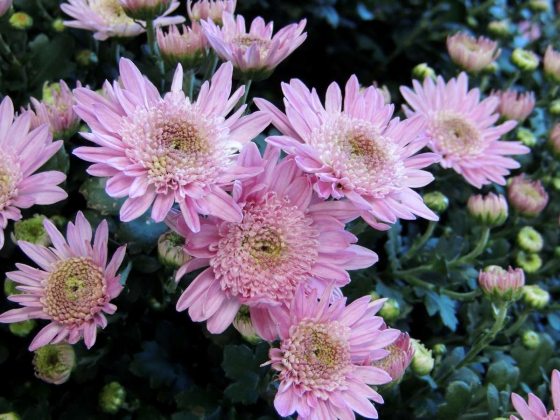
Class 9: Spoon
This aptly-named classification features spoon-like petals that face upwards, radiating out from a round center disk. Interesting and playful, these flowers are extremely textural thanks to their many rows of petals.
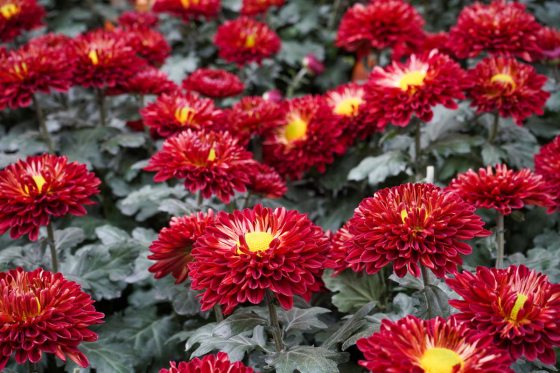
Class 10: Quill
Chrysanthemums with the quill classification lack an open center, but make up for it in their straight, tubular florets or petals that push out from the center of the flower. The tips of the “quills” can be closed and pointed to open and flat. Chrysanthemum × morifolium ‘Seaton’s Ashleigh’ features breathtaking purple quills and can be found in the East Conservatory.
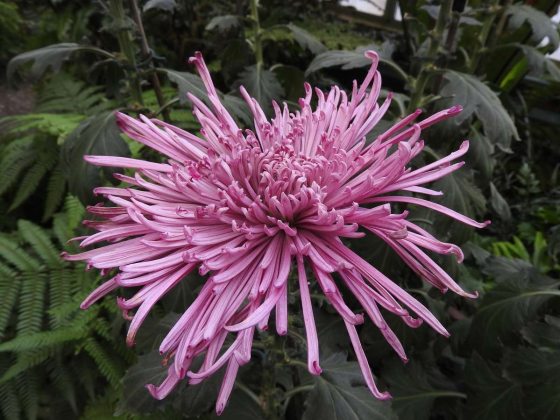
Class 11: Spider
Chrysanthemums of the spider classification lend multi-faceted visual interest, thanks to their long tubular ray florets that may coil or hook at the ends. The petals can be thin or thick in width. Our Main Conservatory boasts plenty of blooms that fall within the spider classification.
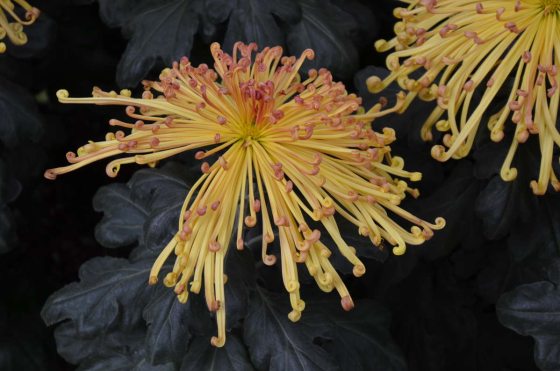
Class 12: Brush or Thistle
Chrysanthemums classified as brush or thistle can resemble an artist’s paintbrush, or feature fine, twisted tubular florets that appear flattened. Petals stick either up or out. Our Chrysanthemum × morifolium ‘Fluffy’ on the eastern walkway of the Main Conservatory represents this classification.
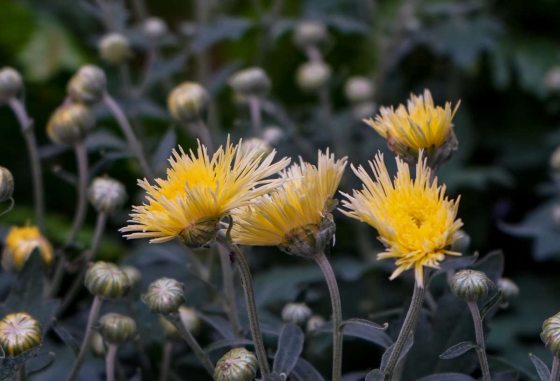
Class 13: Unclassified or Exotic
Blooms in the unclassified or exotic category may exhibit characteristics of more than one bloom class or are considered distinctive and unique, and therefore do not fall into any other category. You’ll find stunning examples of this classification in both our East and Main Conservatory.
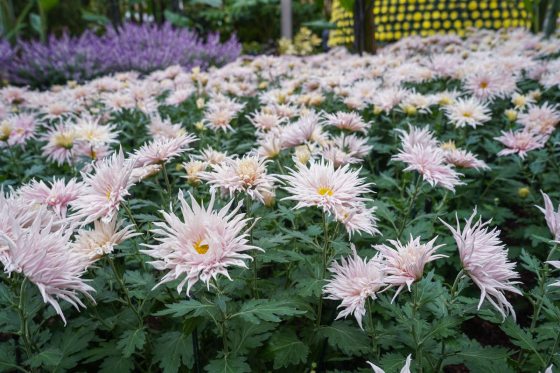
If you’d like to see all 13 classifications together in one place, our classification display in the Fern Passage is the perfect place to compare and contrast each type. Behold these beauties in person during Blooms & Bamboo: Chrysanthemum and Ikebana Sogetsu Artistry, on view now through November 17.
